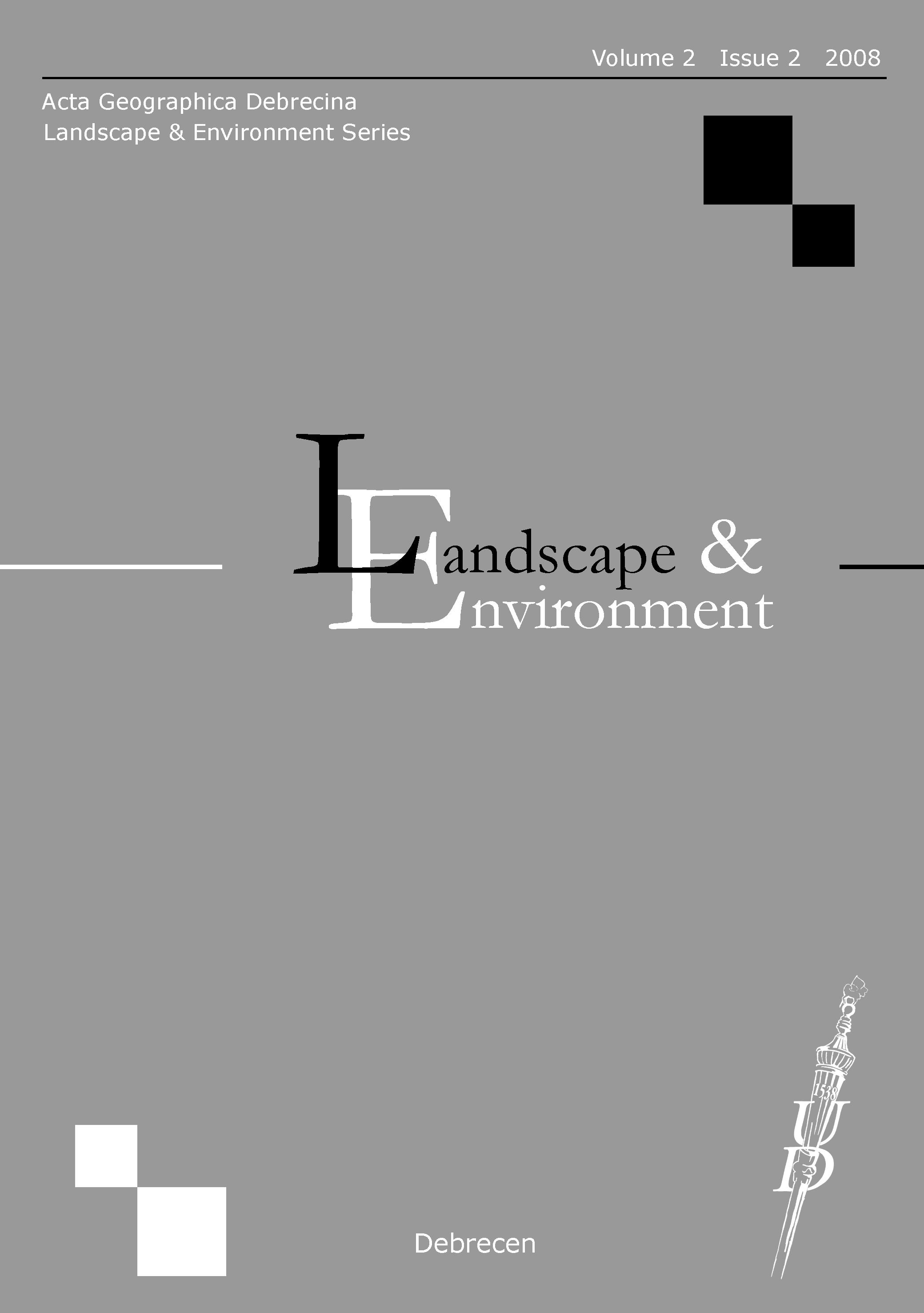Heavy metal content of flood sediments and plants near the River Tisza
Authors
View
Keywords
License

This work is licensed under a Creative Commons Attribution-ShareAlike 4.0 International License.
How To Cite
Abstract
The River Tisza is Hungary’s especially important river. It is significant not only because of the source of energy and the value insured by water (hydraulical power, shipping route, stock of fish, aquatic environment etc.) but the active floodplain between levees as well. Ploughlands, orchards, pastures, forests and oxbow lakes can be found here. They play a significant role in the life of the people living near the river and depend considerably on the quality of the sediments settled by the river. Several sources of pollution can be found in the catchment area of the River Tisza and some of them significantly contribute to the pollution of the river and its active floodplain. In this paper we study the concentration of zinc, copper, nickel and cobalt in sediments settled in the active floodplain and the ratio of these metals taken up by plants. Furthermore, our aim was to study the vertical distribution of these elements by the examination of soil profiles. The metal content of the studied area does not exceed the critical contamination level, except in the case of nickel, and the ratio of metals taken up by plants does not endanger the living organisms. The vertical distribution of metals in the soil is heterogeneous, depending on the ratio of pollution coming from abroad and the quality of flood.

 https://doi.org/10.21120/
https://doi.org/10.21120/